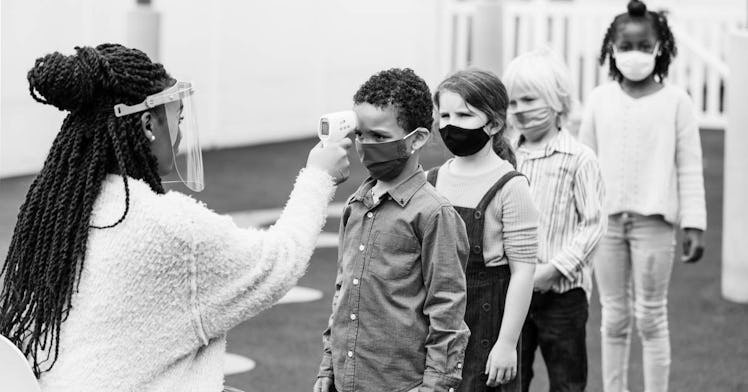The Delta Surge is Here. Schools Don’t Have Enough Nurses
Blame the the great recession.

Well before the COVID-19 pandemic hit the United States, a school nurse shortage problem had been brewing across the nation’s schools. While the Centers for Disease Control (CDC) has long called for there to be one school nurse for every 750 students, and the American Academy of Pediatrics (AAP) has pushed for there to be one full-time school nurse in every school building, that’s more aspirational than reality.
In fact, as of the last school year, there was more like one nurse for every 1,200 students on average, per CNN‘s recent reporting on the problem and a study out of the University of Washington.
And that average obscures the fact that in many schools across the country, in particular rural ones, there are no nurses at all. A study from the National Education Association found, for example, that there’s one school nurse per 4,000 students in major cities. Another recent National Education Association study found that in 14 states across the country, there are far more than 2,000 students per single school nurse — only 40 percent of schools have a full-time nurse, 35 have a part-time nurse, and 25 percent have no nurse at all. In Utah, there are nearly 5,000 students per school nurse; in Hawaii, none at all, per Fatherly’s last reporting in June of 2020 on the issue.
And at a time when a highly transmissible and potentially deadly virus is sweeping the nation, the lack of school nurses is a huge problem. This Labor Day has seen more than a 300 percent increase in COVID-19 positivity than the Labor Day before, despite the wide prevalence of vaccine availability as only just 53.6 percent of eligible people have been fully vaccinated against the virus. Though many adults who teach or staff school buildings are vaccinated, the vast majority of the children within them are not, as only one vaccine is approved for kids 12 and up.
That leaves millions of kids vulnerable to COVID-19 sweeping through their schools and many millions of them without a nurse to go to if they get sick.
It’s not just COVID-19 that’s the problem, though nurses can be tasked with creating COVID-19 action plans, looking at improving ventilation, figuring out how to treat and isolate children if they do come down ill in a school day, setting up mobile vaccination sites, and more, while also contending with state legislatures banning mask mandates in schools thus putting everyone at risk.
Many children with food allergies, medication needs, asthma, and rising rates of anxiety and depression after a disastrous few years will need access to school nurses who simply do not exist.
Underlying conditions for children (like asthma and obesity) are more commonly seen in poorer neighborhoods and communities, and these conditions make COVID-19 more dangerous. Many of these children in schools have not set foot in front of a doctor in quite some time. It’s clear a crisis is on our hands. No amount of deputizing teachers to administer asthma medication or EpiPens will be able to deal with it.
The worst part is that, though this problem is calamitous, it’s been on the radar for quite some time. After the Great Recession in 2007 school budgets were slashed and school nurse positions eliminated. They haven’t been re-hired in pre-recession numbers.
Now, the average school nurse is around 55 years old, meaning they will retire within the next 10 years. An aging population of workers where they are overstretched and understaffed are now tasked with keeping kids and everyone else safe. Sadly, despite the fact that there’s widespread knowledge of the school nurse problem, little has been done to resolve it.
In 2017, two Senators — John Tester from Montana and Dina Titus from Nevada — introduced a bill called the NURSE Act, which would make grants eligible to schools that receive Title I funding to hire more nurses. Nothing has happened with it since. And while Titus is urging lawmakers to include school nurse funding in the $3.5 trillion budget reconciliation package to ensure that children don’t needlessly get ill or that outbreaks don’t overwhelm school systems, the nurse shortage is here right now.
In the meantime, schools will have to figure it out.
This article was originally published on